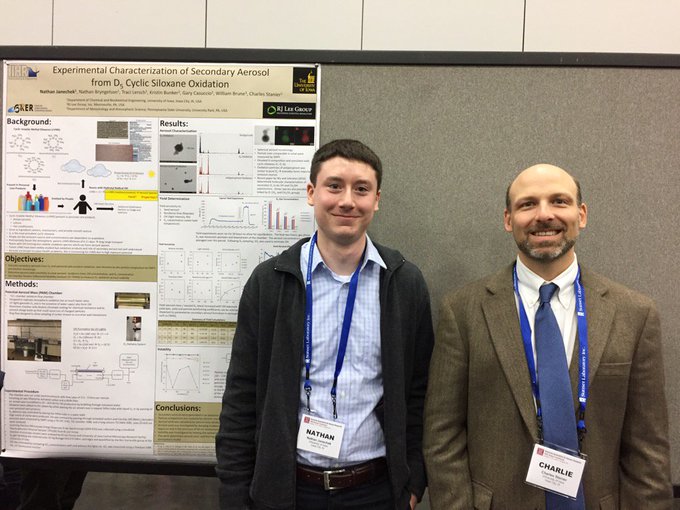Title: Physical Properties of Secondary Photochemical Aerosol from OH Oxidation of a Cyclic Siloxane
Citation: Janechek, N., Marek, R.F., Bryngelson, N., Singh, A., Bullard, R.L., Brune, W.H., and Stanier, C.O. Physical Properties of Secondary Photochemical Aerosol from OH Oxidation of a Cyclic Siloxane, published in Atmos. Chem. Physics, 19, 1649–1664, 2019.
Link & doi: https://doi.org/10.5194/acp-19-1649-2019

Abstract: Cyclic volatile methyl siloxanes (cVMS) are high-production chemicals present in many personal care products. They are volatile, hydrophobic, and relatively long-lived due to slow oxidation kinetics. Evidence from chamber and ambient studies indicates that oxidation products may be found in the condensed aerosol phase. In this work, we use an oxidation flow reactor to produce ∼100 µg per cubic meter of organosilicon aerosol from OH oxidation of decamethylcyclopentasiloxane (D5) with aerosol mass fractions (i.e., yields) of 0.2–0.5. The aerosols were assessed for concentration, size distribution, morphology, sensitivity to seed aerosol, hygroscopicity, volatility and chemical composition through a combination of aerosol size distribution measurement, tandem differential mobility analysis, and electron microscopy. Similar aerosols were produced when vapor from solid antiperspirant was used as the reaction precursor. Aerosol yield was sensitive to chamber OH and to seed aerosol, suggesting sensitivity of lower-volatility species and recovered yields to oxidation conditions and chamber operation. The D5 oxidation aerosol products were relatively non-hygroscopic, with an average hygroscopicity kappa of ∼0.01, and nearly non-volatile up to 190 ∘C temperature. Parameters for exploratory treatment as a semi-volatile organic aerosol in atmospheric models are provided.